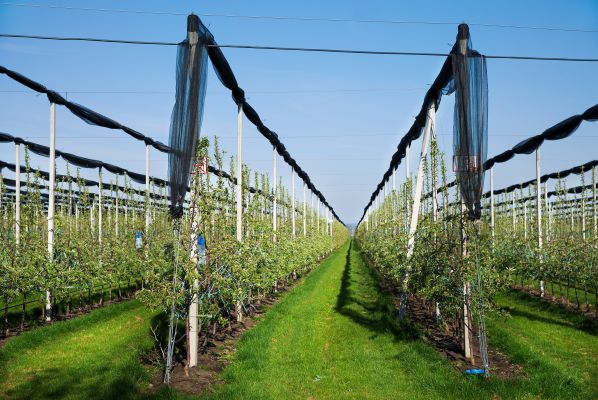October 21, 2025
Which Crop Insurance Coverage Level is Right for You?

Authors: Kelsey Linder & Cuyler Reynolds
Each year, your perennial crop insurance policy will renew by November 20. It is important to meet with your agent each year, prior to this date, to ensure accuracy and alignment in your risk management goals.
Purpose of an annual policy review
Part of the annual policy review will entail looking at the total coverage under your policy and adjust based on your farm’s needs. Many people wonder, what coverage level is right for me? The simplest answer is, if you were to have a loss event that rendered no saleable apples, would crop insurance be enough to keep you in business for another year? Would the payment be enough to cover your input cost per acre? This answer may create more questions, and that’s where your crop insurance can help you develop a plan that works for your operation.
Your crop insurance agent can assist with a detailed review of your policy’s performance over the past year if you filed claims, address any modifications to your business structure, or discuss considerations for new individuals joining the business. Each farm will have unique needs based on these factors, the mix of varieties grown and how the fruit is marketed.
Coverage options
The basic apple policy is Multi Peril Crop Insurance (MPCI). From there, you can specify coverage for fresh or processing based on your farm’s needs, with a specific price point for each to get paid per bushel in the event of a loss. For example, a fresh policy may not be enough coverage on a farm that grows only Honeycrisp for direct market consumption in the Hudson Valley. A varietal group coverage may be too much coverage for someone who grows only processing apples in Wayne County.
Additionally, other programs through FSA, such as the Supplemental Disaster Relief Program (SDRP), may impact coverage decisions as they have linkage requirements with crop insurance in order to receive funds.
Coverage levels
Once you’ve selected the appropriate policy, you determine the percentage of your 5-year actual production history to cover. For example, if you have a 1000 bushel/ acre history, and choose 75% coverage level, you will be guaranteed 750 bushels per acre.
If a loss occurs, you have a few extra options to add to your policy, one of which is the Fresh Fruit Factor. Without this, you are only covered against production — meaning the most likely (but not only) cause of loss would be a freeze event rendering few apples on the tree. With the Fresh Fruit Option (AF), you have an additional layer of coverage that accounts for quality impacts stemming from hail, russeting and many other issues.
Beyond farm production only coverage, there are additional policies based on the county average called SCO and ECO. Ask your agent for more information.
Next steps
With the sales closing deadline coming up (November 20th) to protect your 2026 crop, it is important to have an in-depth conversation with your agent to choose the most effective coverage to protect your farm. Each farm business is unique, and the Risk Management Agency has regular updates to the program and county-specific rates. Crop Growers is a trusted advisor in helping protect your farm and business.
Connect with your Crop Growers agent today to learn more about risk management solutions tailored for your farm.
Crop Growers is an equal opportunity provider.





